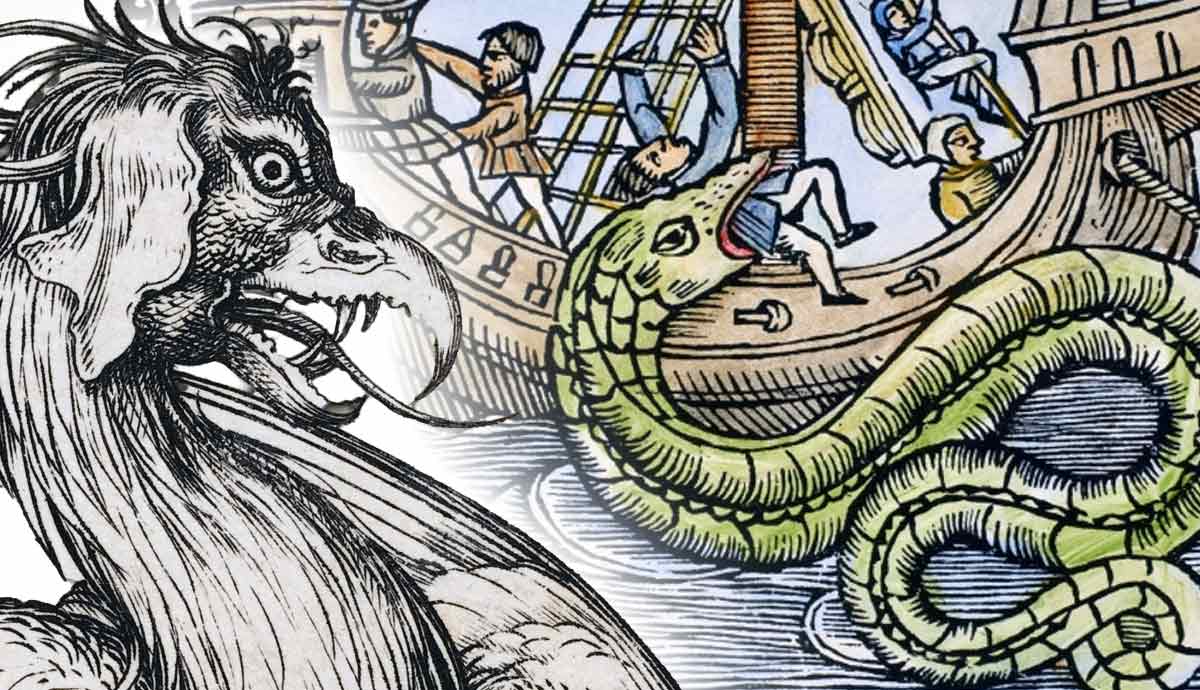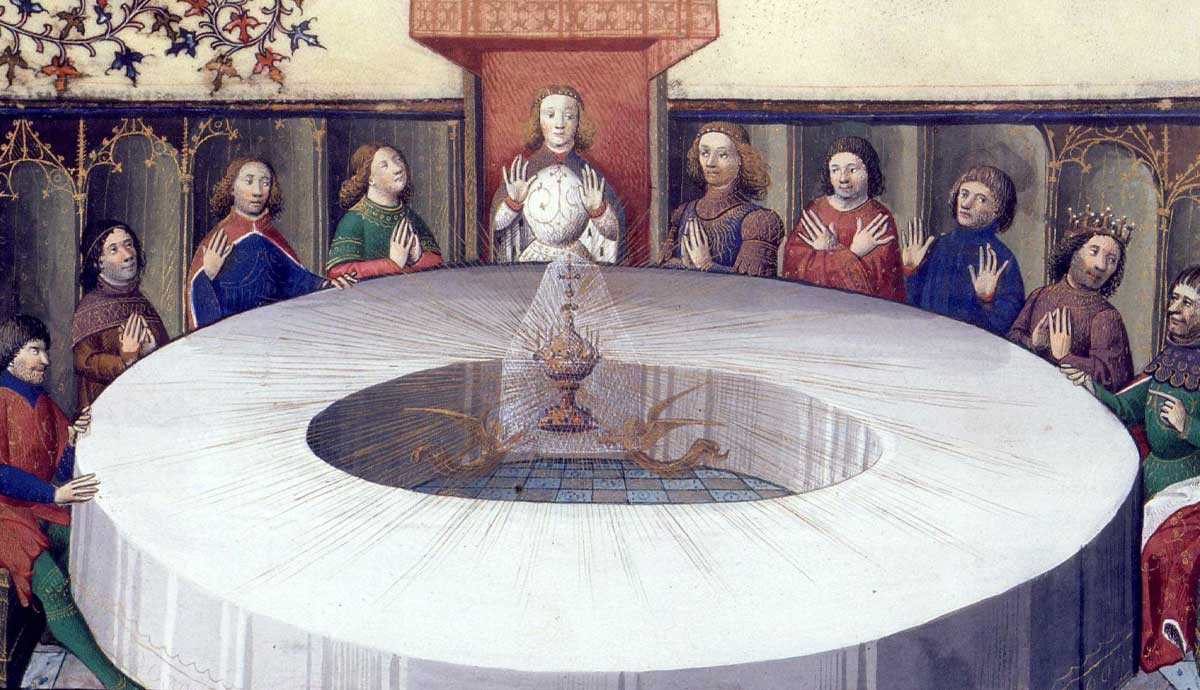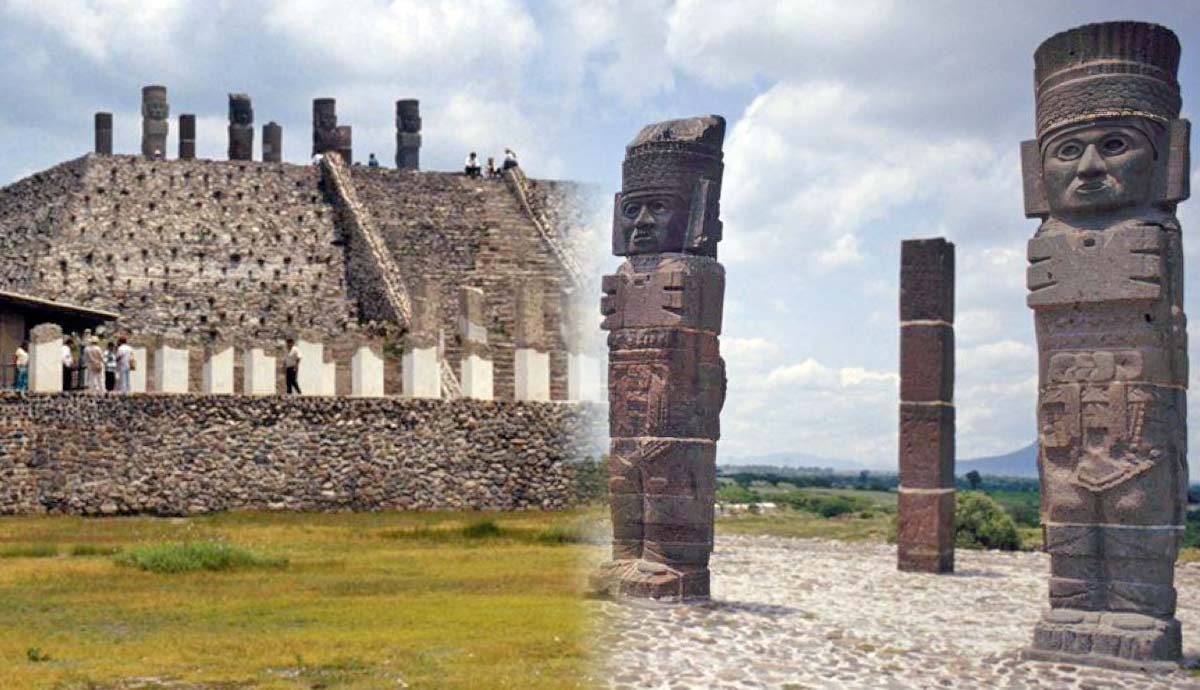
Folk beliefs in the Middle Ages included a variety of fantastical creatures pulled from a hodgepodge of local customs, ancient tales, Judeo-Christian teachings, and limited understanding of zoology. The sea monsters and demons that feature in these stories range from the famous to the obscure to the downright bizarre. It is unknown how many people actually believed in the existence of these creatures or if they were considered metaphors and moral tales. Here are just a few notable examples of sea monsters, fantastic beasts, and strange cryptids that reportedly roamed the world during the Middle Ages.
Medieval Sea Monsters

Look at any of the maps made during the Middle Ages and the earlier portion of the early modern era, and the oceans will be filled with fearsome sea monsters. This is unsurprising, as the sea is a dangerous place. Unexpected storms, poor navigation, or any number of other mishaps could spell disaster, even in the modern day, never mind the medieval era. Oftentimes, sea monsters would be placed on maps as a way to show the danger of the unknown. While these could be generic warning signs, there was also a belief in many unusual, and often dangerous creatures that lived beneath the waves.
Among the most commonly referenced sea creatures were sea serpents. These could be colossal and able to sink a ship with ease. The most famous of these was Jörmungandr, who, according to the Norse, was so large that he lay coiled around the entire outer sea of the world and had an ongoing rivalry with the thunder god Thor.
The Hafgufa was a sea monster believed to occupy the waters around Iceland and Greenland. It was described as an enormous sea steamer that vomited up a kind of chumming bait to attract prey, including whales and ships, into its open mouth, which it would then swallow. According to the 13th-century The Kings Mirror, when the king told his son about this fantastical creature and said that he would not believe it if he had not seen it with his own two eyes. The creature is also mentioned in the 14th-century Orvar-Odds Saga, which says that the creature sits below the surface with just its nostrils and jaws poking out. These look like rocks, and the creature devours ships when they sail between them.

The Kraken was probably the most famous creature in Norse lore, and it was believed to be a colossal octopus or squid that lived in the sea between Norway and Iceland. Olaus Magnus drew the creature on his map in the 16th century, and it is referenced as pulling down ships in several 18th-century texts. It may have been inspired by giant ships, often 12-15 meters in length.
Other sea serpents, while not as grand in scale, were still considered dangerous to ships and sailors. Some illustrations depict sea serpents blowing water from a spout, which would imply that they were whales that have been misidentified. Other possible culprits are conger eels, which can grow up to ten feet in length and are found in coastal waters around Europe. Oarfish, which have been measured at over fifty feet, inhabit waters around the world. Oarfish live in much deeper waters, though occasionally, this snake-like fish will be washed ashore, much to the amazement of witnesses.
Even fresh water held these fearsome creatures, such as the famous legend of the Lambton worm, which terrorized a village and met its demise in a local river.

Mermaids were also famous nautical creatures in the medieval world. These half-fish-half-woman beings were inspired by tales in the ancient world of Sirens, who lured sailors to their deaths, and Atargatis, a Syrian deity who was also half-human-half-fish. Tales of mermaids vary significantly. They could be malicious, luring sailors to their deaths, a nuisance, cutting fishing lines, or even beneficial, warning sailors of impending storms. They were often used as lessons in morality, warning about the dangers of lust, envy, or greed. In some depictions, the mermaid has two tails, a motif that is still used today as the Starbucks logo.
Deadly Dragons

Without a doubt, the most famous creatures in medieval folklore were dragons. These fire-breathing menaces were usually depicted as evil, killing innocents, despoiling the land, and being the source of hardship. In the Anglo-Saxon tale Beowulf, the final creature the hero encounters is a massive dragon that sits upon a horde of stolen treasure. In this way, they represent sinfulness in general and, more specifically, greed. When combined with Christian beliefs, the dragon was a representation of, or at least used as a metaphor for, Satan.
Dragons were driven off or killed by a saint in single combat, showcasing the power of faith as a way of banishing evil. The most famous example is St. George, who slew a dragon about to eat a princess that was sacrificed to the beast. This made him the patron saint of England, warriors, and those with dangerous professions. St. Margaret was eaten whole by a dragon, but she cut her way free using a crucifix, escaping from the beast’s stomach unharmed.

Though it was usually considered an evil creature, dragons were also used to represent positive, or at least useful, traits. On the famous Sutton Hoo helmet, a prominent dragon is embossed on the front of the helm, easily visible by anyone looking at it from the front. Though it was more than likely used as a ceremonial piece, the helmet represents strength, power, and wealth, and makes it clear that the owner of the helmet is someone to be taken seriously. Dragons were also used as heraldry, once again denoting power, martial strength, and wealth.
In Wales, it was believed that the wizard Merlin saw a red and white dragon fighting, and the red one managed to drive off his rival. This was interpreted to mean that the native Britons would drive out the Saxon invaders. While this didn’t happen, the red dragon is still a potent symbol of national pride and is currently the centerpiece of the Welsh flag.
Dragons were also used for mundane purposes, being painted on walls and tapestries for decoration, carved as gargoyles on cathedrals, and even made into pitchers for carrying water. Their purpose in this is purely for aesthetic value, not representing anything other than something that looks interesting.
Mythical Unicorns

Another well-known creature in the Middle Ages is the Unicorn. Legends of the one-horned creature exist as far back as the ancient world, with Greek and Roman writers commenting on them. By the time of the medieval era, the unicorn was seen as a symbol of strength, purity, and grace, whose horn had healing properties and could purify polluted waters. Cups made from its horn, likely narwhal or rhinoceros horn, were said to be able to heal illness and injuries. Unicorns were also fearsome and were known to fight and kill elephants, goring the massive animals with their horns. It was also impossible for a man to capture a unicorn, but they could be subdued or at least controlled by young women, particularly virgins.
This combination of purity, strength, and healing ability led many religious figures to associate Unicorns with Christ. It became a popular heraldic symbol and was placed on Scotland’s national coat of arms. More than likely, the idea of the unicorn was probably inspired by the oryx, a type of antelope. The two names, unicorn and oryx, are often used interchangeably. There are some descriptions of unicorns that date to the ancient world that describe an animal very similar to a Rhinoceros. A similar creature is the monoceros, another one-horned beast more akin to a stag than a horse.
Hybrid Creatures

Several medieval cryptids—which are creatures that have not been proven to exist—were combinations of several mundane animals into a single beast. One of the most famous of these was the griffin, which had the head and forelegs of an eagle, but the body and rearmost legs of a lion, though in some cases the lion would be part ox. These fearsome creatures have their origins in the ancient world, and belief in them continued through the Middle Ages. Griffins were large, much larger than a lion, and were strong enough to fly off with a horse and its rider with ease. Like the unicorn, the griffin was a symbol of strength and ferocity and was a popular heraldic symbol.
Another hybrid creature was the manticore. This beast has its origins in Persian folklore and has the body of a lion and the head of a human, with the tail of a scorpion. It is sometimes able to shoot poisonous darts from it at a distance. It is a fearsome creature, eating any other animal it encounters, except for lions, whom it could never defeat in combat. However, their preferred prey were humans, and they used cunning as their main hunting method, hiding in tall grass with their human heads high enough for people to see. When the person approached to investigate, they would spring out, poisoning the victim with their stinger or ripping them apart with their claws.
Human-Like Creatures

Some cryptids were not mere savage beasts but sapient beings as intelligent as any human. Perhaps the most famous of these was the Cynocephali, or dog-headed men. As the name suggests, these had the heads of dogs but otherwise were the same as normal humans. Living far to the east, they were first described in ancient Greece. They had functioning societies and were capable of rational thought. During the Middle Ages, there was even debate about whether the Cynocephali had souls, which would show how seriously many took their existence. According to Christian tradition, St. Christopher helped carry a young Christ across a river and is depicted either as a giant or as having a dog’s head. It is possible that tales of dog-headed men were inspired by baboons or some other primate.

While the Cynocephali were strange for having a dog’s head, at least they had one. Even more strange was the race of headless men called the Blemmyae. They have human bodies but nothing above the shoulders. They could have their eyes situated either in their chests or located on each shoulder, with their mouths located in the center of their torsos. In some versions, the creatures were large in size, being up to eight feet tall. Though they were often depicted as being smooth-skinned, some descriptions have them covered in shaggy fur or having long beards that hang down past their legs. As with most unusual creatures, the Blemmyae were a representation of the unknown in distant lands. They were believed to inhabit either the far reaches of India or Africa. This last possible location has a grain of truth to it, as the Blemmyes are a tribe that lived along the Red Sea coast, just south of Egypt.
While people in the past may or may not have believed in these creatures, today they are believed to be myths, relics from a time when there was a reason to fear the unknown and distant lands held untold marvels. Still, dragons, mermaids, dog-headed men, and other fantastical beasts still capture the imagination, regularly appearing in modern popular culture.










